I Know That My Redeemer Lives: Infallible Proofs Of The Resurrection
This article presents the infallible evidence that Jesus Christ rose from the dead. For my part, after analyzing each one of the proofs, there is something that I can firmly say: “I know that my redeemer lives” and if there is any doubt in your mind about the Resurrection of Jesus Christ, I am sure that when reading these pages none will remain.
Evidence that Christ lives
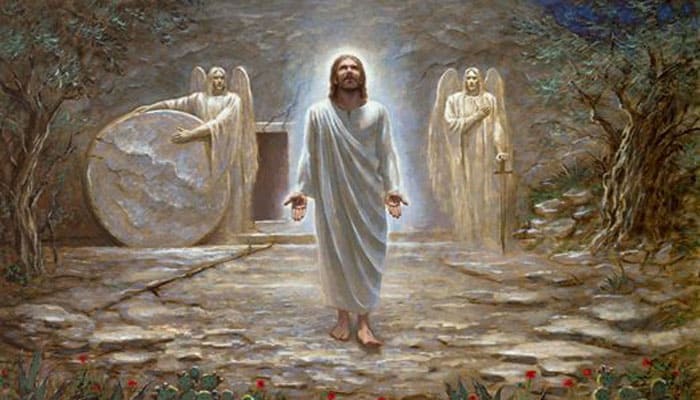
Without the bodily resurrection of Jesus Christ, the Christian faith would have been born dead because a living faith cannot survive a dead Savior. In chapters 20 and 21 of Acts, you can see all the details of the moment in which Christ was resurrected.
In the early hours of the morning, a group of women walks calmly and slowly through the olive grove. They carry vials of spices because they plan to anoint the corpse of Jesus of Nazareth. Her eyes are red from crying. It seems that they had not stopped crying since that terrible moment on Friday afternoon when the soldiers ordered the body of Jesus to be taken down from the Cross.
Since it was late in the day, they did not have time to prepare his body for burial fully. They came this morning to finish the job. They arrive early so that the authorities do not see them. The last thing they want is to draw attention to themselves. Now they only have a few more yards left.
Somehow they have to convince the Roman guards to open the tomb and let them in. When they reach the clearing, a shocking sight greets them. The soldiers are unconscious on the ground, the seal is broken, the stone has been removed, and the tomb is open. When the women look inside, their surprise turns to alarm. The tomb is empty.
Would someone have taken the body of Jesus? What happened? Where is his body? Why is the tomb empty? What does that mean? The question before the house is straightforward. Did Jesus rise from the dead? Can we be sure? Acts 1:3 says there is:
” Much compelling evidence ” that Jesus Christ rose from the dead.
What are those tests? And can we trust this? This is the most important question any of us can ask. Behind the answer lies the problem of what happens to our eternal soul. I invite you to join me as we calmly and carefully examine the evidence that will make us say, “I know that my redeemer lives.”
looking at the evidence
As we begin our investigation, let us simply look at the facts as we have them in the Gospel accounts. Here are seven pieces of evidence surrounding the events of that Sunday morning in Jerusalem in AD 33.
The roman guard
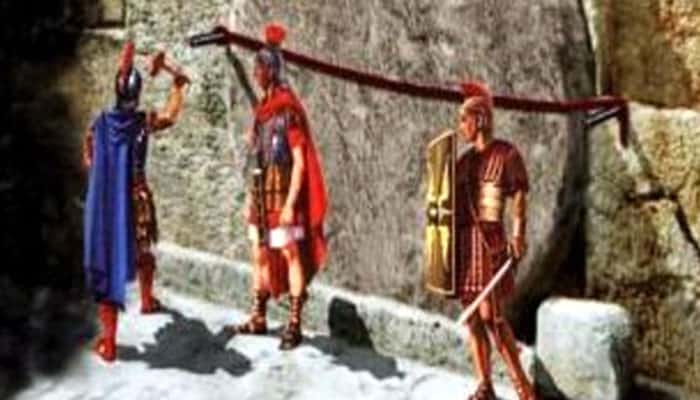
After Jesus was buried, Pontius Pilate ordered a Roman guard to be placed around the tomb. Such a guard usually consisted of 16 men. Four soldiers would have been placed immediately in front of the tomb, with the other 12 sleeping in a semicircle in front of them. The guards changed shifts every four hours.
These soldiers were elite, the most highly trained fighting force in the world. The penalty for failing to watch a prisoner or falling asleep while working was death (sometimes they were burned alive in a fire made from their own clothes). Trust me. These soldiers had every reason to stay awake. No one could have gotten past them to steal the body from the tomb.
The stone
The stone is “the only silent and infallible witness of the whole episode.” The stone was enormous and no doubt weighed more than two tons. It was so heavy that the women who came in on Sunday morning knew they couldn’t move it. Once in place, it took three or four men to move it.
The gospels also tell us that the soldiers sealed the tomb, meaning that they stretched a rope across the rock and tied it at each end with a sealing compound. They then stamped it with the seal of the Roman governor. The penalty for breaking the seal was death. This again argues against any attempt to steal the body.
The grave clothes
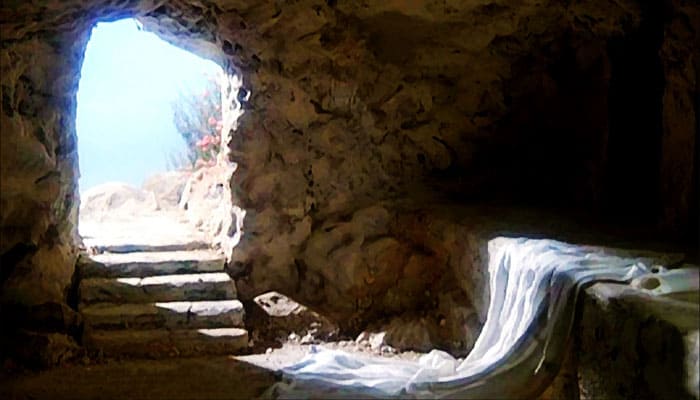
They found the linen sheets still in place with the face-covering folded to the side. Evidently, the spices and resins had hardened into the shape of Jesus’ body, leaving the appearance of a cocoon after the butterfly escaped. How do you explain that fact?
Grave robbers would have either taken the body without unwrapping it or unwrapped it and tossed the winding sheets aside. No one steals a body and then rewraps the grave clothes. I believe that when Jesus rose from the dead, he passed through the grave clothes leaving the linen wrappings behind just as John and Peter found them.
the empty tomb
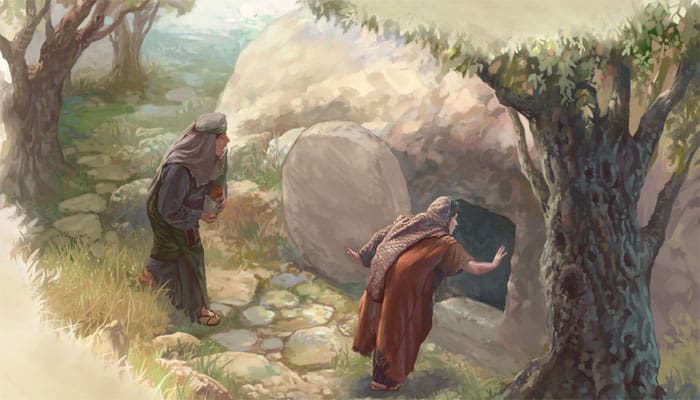
Skeptics have never been able to explain the following fact. When Maria arrived on Sunday morning, the tomb was empty. When Pedro and Juan arrived, the tomb was empty. When the other disciples found the tomb, it was empty. When the Jews inspected the tomb, it was empty. When the Roman soldiers woke up, it was empty. No one has disputed that fact.
Think about it. Within weeks of the crucifixion, the disciples were publicly preaching that Jesus had risen from the dead. If they had been lying or hallucinating, all the authorities would have to do is simply go to the tomb and drag out the dead body of Jesus.
They could have nailed the body to the city wall, which would be the end of the Christian movement. But they couldn’t do it because the tomb was empty and the body had disappeared. They had no response to the preaching of the apostles. The silence of the Jew is as eloquent as the speech of the Christians.
resurrection appearances
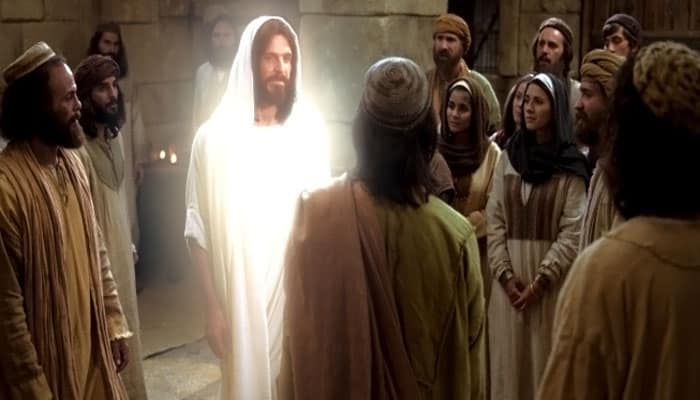
The New Testament records at least 12 separate appearances of Jesus after his Resurrection. Sometimes he appeared to individuals, like Mary and Peter, sometimes to a small group, like the two disciples on the road to Emmaus, at other times to a larger group, like the disciples, and at least once to a group of 500 people.
Keep in mind that these are all testimonials from witnesses who could see. Somehow you can dismiss one or two of them as illusions, but it’s not possible to dismiss them all. The accumulated weight of all the appearances is overwhelming. They point to one conclusion and one only: Jesus Christ rose from the dead. Now we are safe in expressing the phrase “I know that my redeemer lives.”
The initial disbelief
I have always considered it a point in favor of the Resurrection that all the gospel writers agree that none of the disciples expected Resurrection, and none of them believed it at first.
Luke tells us that when the women who saw Jesus reported this to the disciples, they thought it was an idle story, just wishful thinking. They had to convince themselves against their will that Jesus rose from the dead. This is another thing that proves the Resurrection of Jesus.
The radically surprised disciples

Consider your status on Friday night. They were scared, confused, dazed, fearful, disoriented, and discouraged. Everyone ran for cover. They really believed that Jesus was dead and that they would never see him again. In their minds, Jesus was gone forever. Peter had denied it. The other disciples were standing in the distance.
The women who went to the grave on Sunday morning expected to find a dead body there. The two disciples that Jesus met on the road to Emmaus were walking away from Jerusalem, buried with the corpse of their Master. Meanwhile, the disciples huddled in an upper room with the door closed for fear of the Jews.
Now consider the scene a few weeks later. These same disciples now stand boldly in the temple courts preaching that Jesus Christ is Lord of all, that he had returned from the dead, and that only by repentance and faith can anyone be saved.
What turned these angry men and women into burning evangelists who rocked their world with the gospel message? There is only one credible explanation for such a radical change. They had seen the risen Christ, and that sight had changed them forever.
As word spread from person to person, they began to shout the good news. “He’s alive! He’s alive! He’s alive!” We too can shout now, “I know that my redeemer lives.” If all of this doesn’t convince you, let me make a final point: for 2,000 years, no one has produced a convincing answer to the question:
“If Jesus did not rise from the dead, what happened to his body?” The last unanswered question. Where is that body that was taken down from the Cross?
In 2,000 years of history, no one has provided a credible answer to that question. I’ll go so far as to say that no one ever will. I can tell you that you can start in the north and dig south or start in the east and dig west. You’ll find bones wherever you dig. But you will not find the bones of Jesus because they are not there.
“ Christ lives ” “He is not here, because he has risen, just as he said.”
Considering the alternatives that deny the Resurrection
We must admit that the evidence I have just shared with you has not convinced some people. Over the centuries, from the earliest days to the present, skeptics have offered several alternative theories to explain the Resurrection of Jesus. Let’s consider four of the most popular ideas.
The fainting theory
This theory says that our redeemer had not died on the Cross. Instead, it suggests that he passed out, was presumed dead, was carried from the Cross, wrapped in a funeral blanket, wounds were firmly around his body, anointed with 75 pounds of embalming spices, dragged through the twilight, placed in the tomb, presumed dead, the heavy stone having been rolled into place and then sealed, with a Roman guard stationed in front of the entrance.
Sometime late Saturday night, he awoke from his stupor, found himself wrapped in the shroud in the darkness of the tomb, managed to unwrap the shroud, stood up, somehow rolled the stone from inside and he went out, felling a whole squadron of Roman soldiers, appearing in perfect health to Mary and the others who saw him on Easter Sunday.
The only problem with this is that he had been beaten until his back was in tatters, slapped, punched, kicked, forced to wear a crown of thorns, forced to carry a heavy cross through the city streets until he finally collapsed, nails were driven through his hands and feet, and he was hung on a cross for six hours in total agony as his joints dislocated under strain.
Finally, they pierced his side with a spear, piercing his lungs and heart. John 19:33 tells us that the Roman soldiers did not break Jesus’ legs because “they saw that he was already dead.” All who saw him thought he was dead: the Romans, the Jews, and the disciples.
They were right; Jesus was dead on Good Friday night. No man could be left alive after what he endured. The swoon theory is more complex to believe than the Resurrection and is not taken seriously except by those who refuse to face the truth that Jesus died and then rose from the dead.
The wrong grave theory
This theory suggests that because it was early in the morning, the disciples mistakenly went to the wrong tomb, one that was empty, and were greeted by a gardener who said, “He is not here,” meaning “The man who you’re looking for is buried somewhere else.” This clever theory has a big hole in it. When the sun came up, they would have seen that they were in the wrong grave.
The stolen body theory
According to Matthew 28:11-15, this was the earliest alternative explanation for the Resurrection. But it doesn’t answer one question: Who would steal the body? And because? The Romans wouldn’t steal it, and they didn’t care about Jesus one way or another. Why would the Jewish leaders steal it? They wanted Jesus to stay in the tomb at all costs. Why would the disciples steal it?
They were not expecting a resurrection (remember, the women would come on Sunday morning to anoint his corpse). How would the disciples have defeated the elite Roman guard? What would they do with the body of Jesus? The notion is absurd and shows once again that it is more difficult to believe this theory than to believe that Jesus actually rose from the dead.
The Hallucination Theory
This is currently the most popular theory put forward by those who do not want to believe in the Resurrection. It suggests that Jesus really did die, but that his disciples wanted to believe in his Resurrection so badly that they had something akin to a mass hallucination. The only problem is that the New Testament makes it clear that they did not expect Jesus to rise from the dead.
That was clearly the last thing on their minds, and when they heard the joyous news that he was alive, they did not believe it ( Luke 24:11 ). This theory also asks us to believe that hundreds of people had the exact same hallucination at the same time, something modern psychiatry tells us is simply impossible.
Furthermore, in the Gospels and Acts, Jesus does not merely “appear” to the disciples. He eats with them, talks with them, and walks with them. He speaks to them both in groups and individually. The testimonies are multiple and detailed, they are also diverse in terms of time, place, and particular circumstances. There is no possible way to explain this through a hallucination, a vision, or some kind of mass psychosis. It just doesn’t fit the facts.
- 3 Reasons Jesus Didn’t Come Down From The Cross
- What Happened On The Cross Of Calvary: Luke 23: 39-49
- Take Your Cross And Follow Me: Mark 8:34 Meaning
Characteristics of the Resurrection
Here are some of the characteristics of the Resurrection of Jesus Christ and what it means for us Christians:
1. It is the most attested fact
The Resurrection of Jesus Christ is perhaps the best-attested event in ancient history. I’ve only given you a fraction of the evidence. When all the evidence is fairly examined with an open mind, the only possible conclusion is that Jesus Christ rose from the dead and that we can confidently say “I know that my redeemer lives.”
2. On this, the Christian faith is based
The Resurrection is a doctrine in the Christian faith. It is truly the heart and soul of our faith. If Jesus is still dead, then our faith is in vain. A dead Jesus cannot save anyone. This is not something that is free to debate, as is the timing of the Rapture or the proper mode of baptism.
It is not in the category of whether or not we should speak in tongues. The bodily Resurrection of Christ lies at the core of Christianity. If it is not true, then everything else we believe is also false, and we have been completely deceived.
Let me say this as loud as possible “I know that my redeemer lives,” and you have seen enough proof of it. If Jesus did not rise from the dead, then he is a false prophet and not the Son of God. He could not be our Savior and Lord if he is still dead in the grave. We can’t trust anything he said if he’s still dead.
But that would also mean that the apostles were liars and the church itself is built on lies. Worse still, it would mean that death has triumphed and that we do not have good news for the dying.
In other words, “If for a Savior we only have a ghost, for a heaven we will only have a dream.” Everything we believe stands or falls on the Resurrection of Jesus Christ. You must believe this to be a Christian. If you don’t believe it, you’re not a Christian.
3. It’s the message everyone needs to know
This is the message the world needs to hear. Sometimes we preach the Cross and forget the empty tomb. But the Cross cannot save unless Christ has risen from the dead. The world needs to know that Jesus Christ is alive today. A dead Jesus does not help anyone.
A living Christ can heal, save, forgive, restore, cleanse, renew, guide, and many other things.
4. It gives us the hope of being resurrected too
The Resurrection of Jesus gives us hope in the face of death. There is no other reason to think that we will see our loved ones again. The New Testament, again and again, connects our Resurrection with his. Ours will happen in the future because yours happened in the past.
Sometimes when I’m at the graveside of someone I know, I can almost hear a voice from under the ground say, “I’m going up.” To non-believers, that may sound like wishful thinking, but to me, it’s nothing more than solid biblical faith. In the Apostles’ Creed-words,
I believe in the Resurrection of the dead.

What is your position? You cannot remain neutral because there is no middle ground. Either Jesus rose from the dead, or he didn’t. I can’t force you to believe, but the facts speak for themselves. I am convinced with all my heart that my redeemer is alive today, and I have entrusted my life to him. But I can’t decide for anyone else. The choice is yours.
In my position, I can firmly say, “I know that my redeemer lives.” Perhaps you have seen some image with a photo of Jesus hanging on the Cross. But you know he didn’t just stay there; all the evidence shows that Jesus rose from the dead. On this happy morning, I declare to you that Jesus Christ is alive. My friend, what are you going to say to that? What difference does it make to you? Will you give him your heart and your life?

